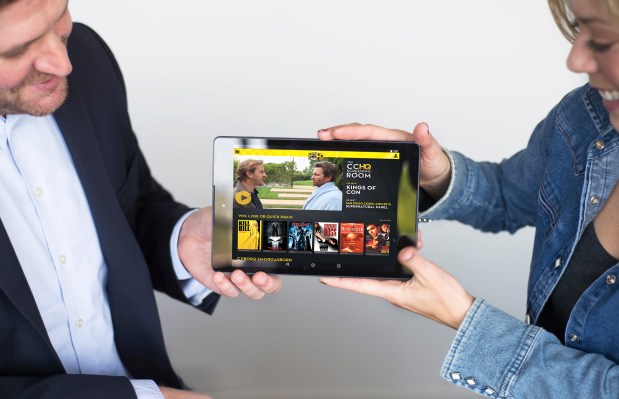IBM today unveiled some significant strides forward in its bid to be a major player in the world of online and cloud-based video services, three months after the company acquired live-streaming startup Ustream and formed a cloud video unit. AOL (which owns TechCrunch), the Canadian Broadcasting Company, Comic-Con and Mazda have all signed on for IBM to provide online video solutions.
And IBM’s video unit is also launching two new services to expand its footprint in live-streaming: a product that will let media companies produce high-quality live-streams over ordinary broadband connections; and an enterprise CDN product that lets companies broadcast live-stream video within their firewalls without impacting other traffic.
IBM is making the news announcements officially today at the National Association of Broadcasters’ confab underway in Vegas, an event that will mean a rush of video related-news coming out this week. (Indeed, Amazon got an early jump on this Sunday, confirming that it will launch a standalone video streaming service, outside of its Prime membership, to compete more squarely against Netflix.)
The moves come on the same day that IBM is announcing its Q1 earnings, and analysts expect the company to continue its long-term revenue decline, which has been a hallmark of the company’s financials for the past 15 straight quarters. The issue with IBM is that the older, legacy parts of its business continue to shrink not just at IBM but in the overall IT industry, and so this is one of the reasons why newer fields like cloud services, video (and its Cloud Video unit) are so essential to its turnaround plan.
Braxton Jarratt, who leads the Cloud Video unit (he came to IBM via another video acquisition it made, of Clearleap, in December 2015), says that today’s news is a mark of how serious the company is about growing its video services as part of its bigger cloud strategy.
But while the company has been an aggressive buyer of tech and talent to grow this business and the services that it offers both to enterprises and to media companies, there is a limit to what it will buy next. For example, he outrules IBM making any moves to buy content-delivery networks such as Akamai. However, it may start to compete against the more anyway.
“We’re not in the CDN business like Akamai,” he said, “but we have so much stored on IBM infrastructure that a huge part of our content can be pulled for customers without the need for a CDN.” Then, when needed, a customer “can move between different CDNs based on cost and capability,” he added.
The Comic-Con deal will see IBM handle a number of services for Comic-Con HQ (a partnership between Comic-Con Intl and Lionsgate), include powering its subscription-based VOD platform, content management, billing and streaming video to multiple devices as well as live-streamed video. The CBC, meanwhile, will use IBM’s services to power its ad-supported video services.
And while AOL is now a part of Verizon and presumably using the latter company’s CDNs and other services, it will be using transfer and automation software from Aspera, acquired by IBM in 2013, to power its media management platform.
While IBM is not announcing a rush of customers yet for the new live-streaming services (it notes one media customer so far, Broadway Video), these are particularly interesting to me and perhaps a sign of things to come. The media service, IBM notes, is hoping to disrupt a lot of the live-streaming business in the market today, which still relies either on dedicated, large fiber connections or satellite links, which can be costly and take time to set up, to work well.
In contrast, IBM says its service — also from Aspera — is an industry first: “open video transport solution capable of high-quality, live streaming over commodity Internet WANs.”
IBM says the new service is built on FASP bulk data protocol to transport any live video source, including local multicast, unicast UDP and TCP to “ensure timely arrival of live video and data independent of network round-trip delay and packet loss.” Less than five seconds of start-up delay is required for 50 Mbps video streams transported over 250 milliseconds round-trip latency and three percent packet loss, sufficient for 4K streaming between continents, IBM claims.
With consumers now running to live-streamed mobile services like Facebook Live and Periscope, this feels like a real sign of the times. More of us are becoming broadcasters, and so broadcasters need to provide content quickly that can compete with this, or at least provide conduits to use that user-generated content more effectively, and this is one route to helping make that happen.
